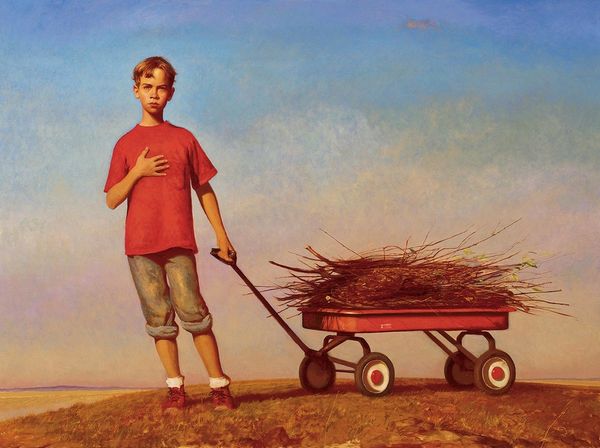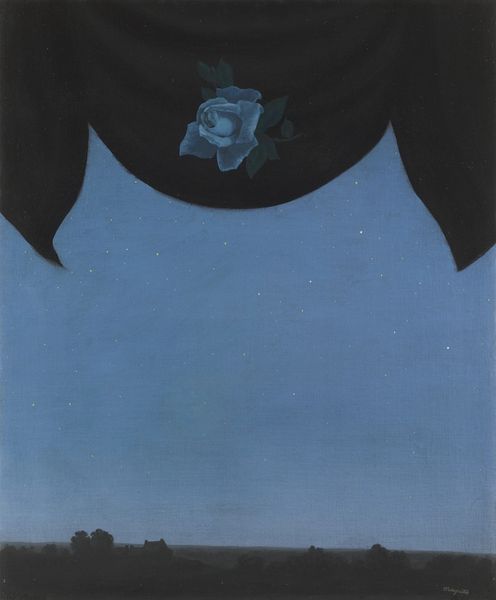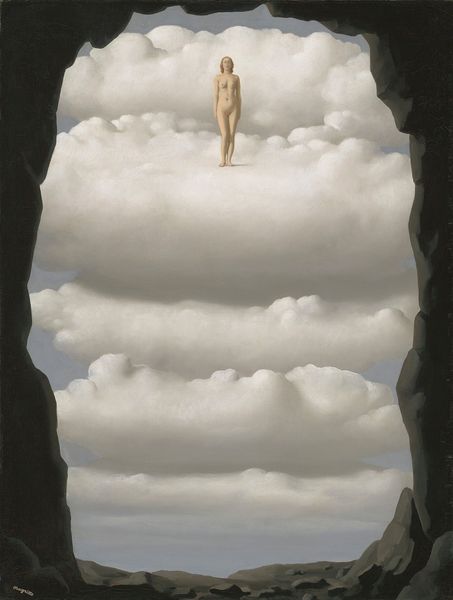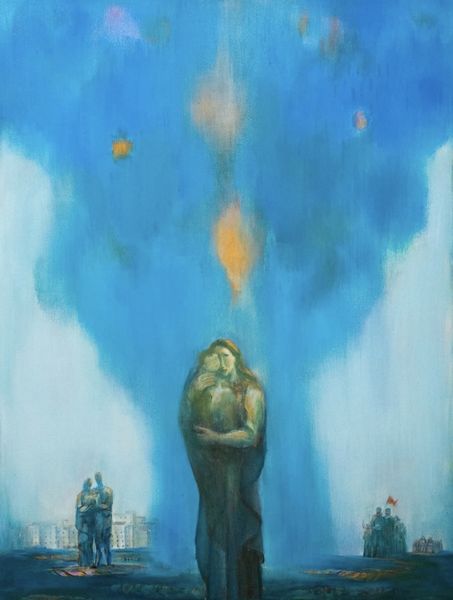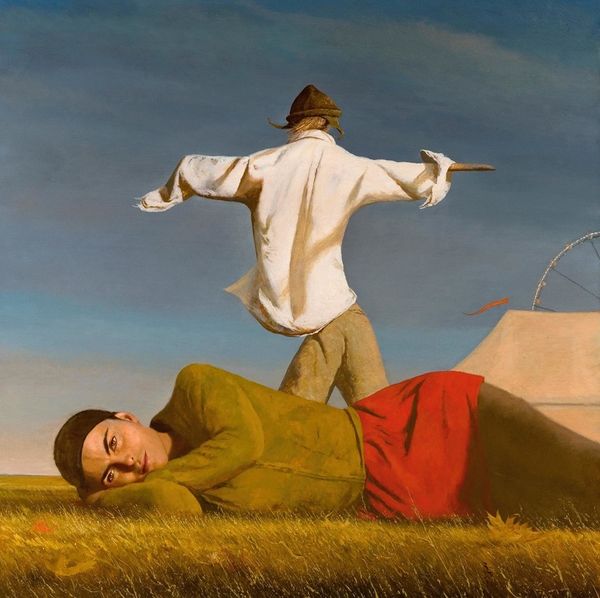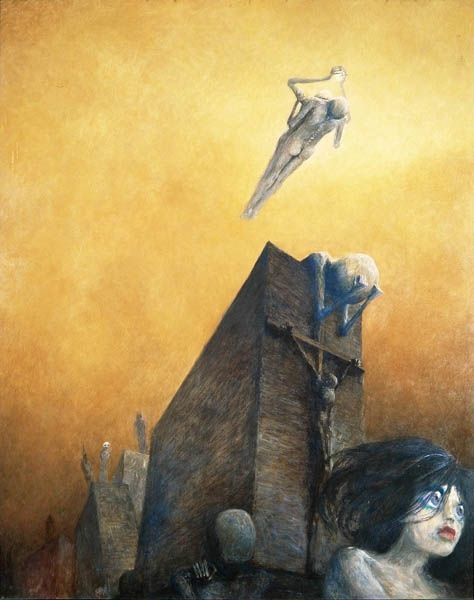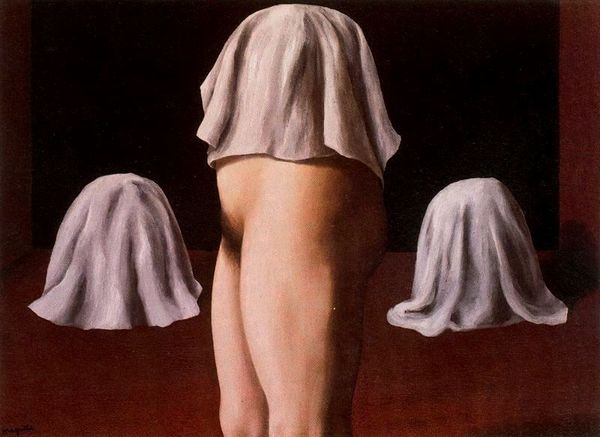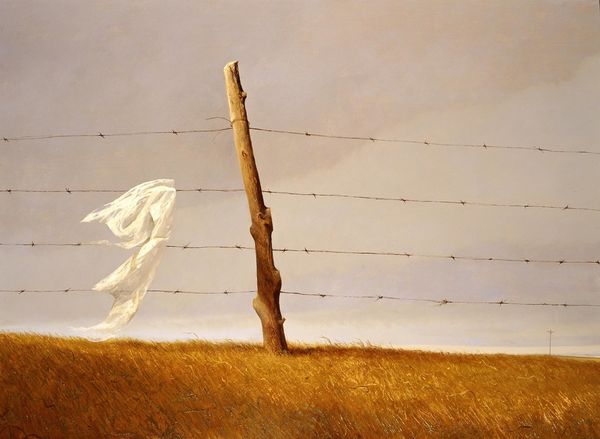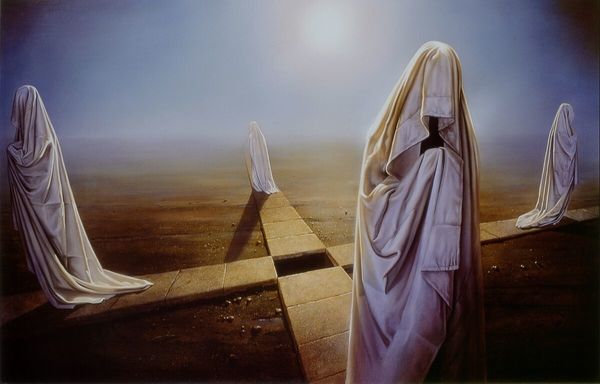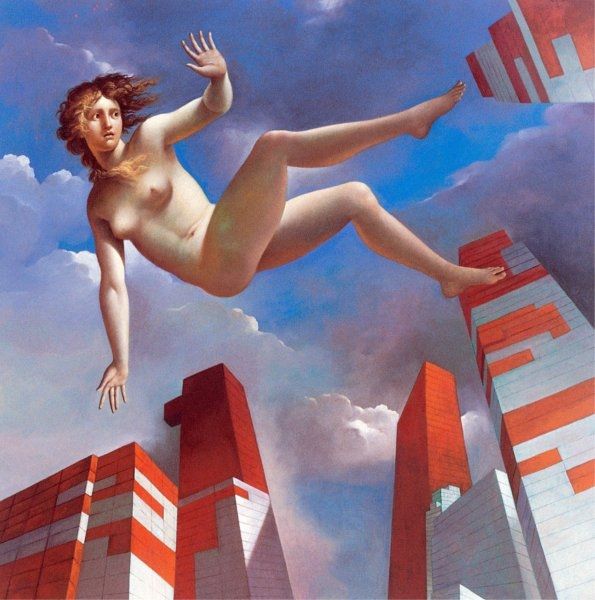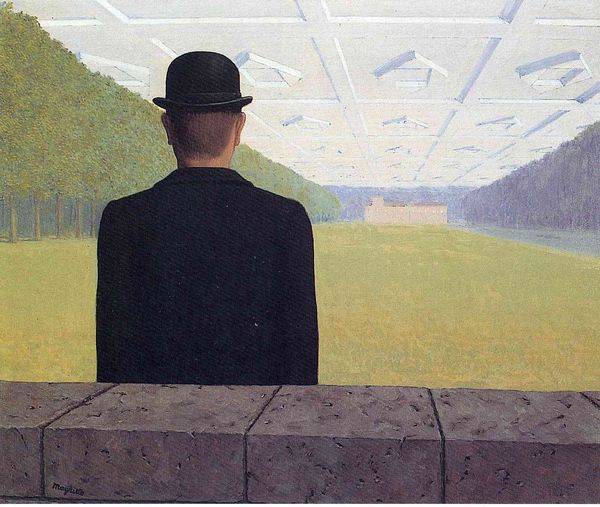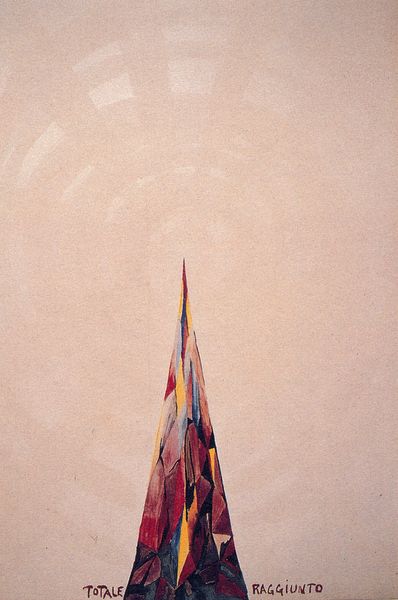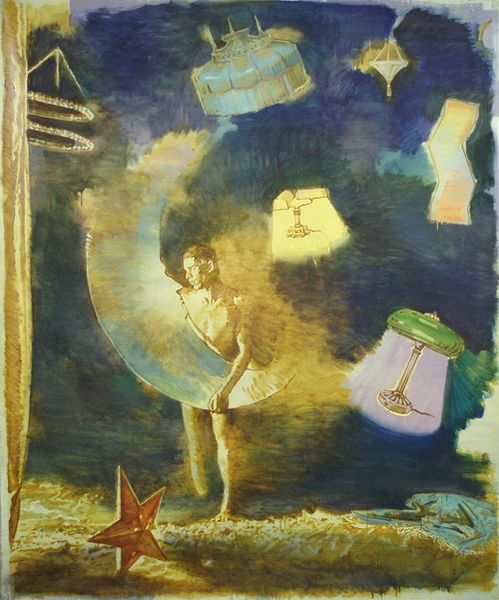
painting, oil-paint
#
portrait
#
figurative
#
painting
#
oil-paint
#
landscape
#
figuration
#
oil painting
#
neo expressionist
#
modernism
#
realism
Copyright: Modern Artists: Artvee
Editor: Bo Bartlett’s oil painting, "The End of the 20th Century," finished in 1998, depicts a lone figure gazing up at a sky streaked with contrails. It feels so ominous, and almost haunting in its simplicity. What visual cues do you see that might reflect this idea of endings? Curator: Consider the title, "The End of the 20th Century." Now, contemplate the boy's back—anonymity, future generations bearing witness. Above him, the contrails form almost apocalyptic geometries, sharp and intrusive against the natural sky. How do you think that position reflects on themes of memory, Editor? Editor: It feels like he’s inheriting a polluted world, represented by those jarring lines in the sky. The painting makes me uneasy. Are those lines just about pollution, or is there something more? Curator: The cross is a prevalent motif throughout Western art. Then we have the arrow pointing heavenward. Are they simply jet trails, or something more significant layered into our shared cultural vocabulary? Bartlett’s juxtaposition with this boy evokes this anxiety and contemplation on civilization. Does the cross resolve itself or hover precariously, almost unbalanced? Editor: I see it now. There's a fragility in that balance, like a question mark hanging over the future. What does it mean, though? It's so direct and obscure, too. Curator: Remember that symbols evolve. What did a cross symbolize before and after the Common Era? This artwork makes you look again. Editor: I'm starting to think about how contemporary anxieties shape traditional symbols in new ways. Curator: Exactly! "The End of the 20th Century" is less a full stop and more an ellipsis, a pause for reflection on where we've been and where we’re going, embedded in every contrail and upward gaze. Editor: Looking at those skies differently has really opened the piece up for me.
Comments
No comments
Be the first to comment and join the conversation on the ultimate creative platform.

